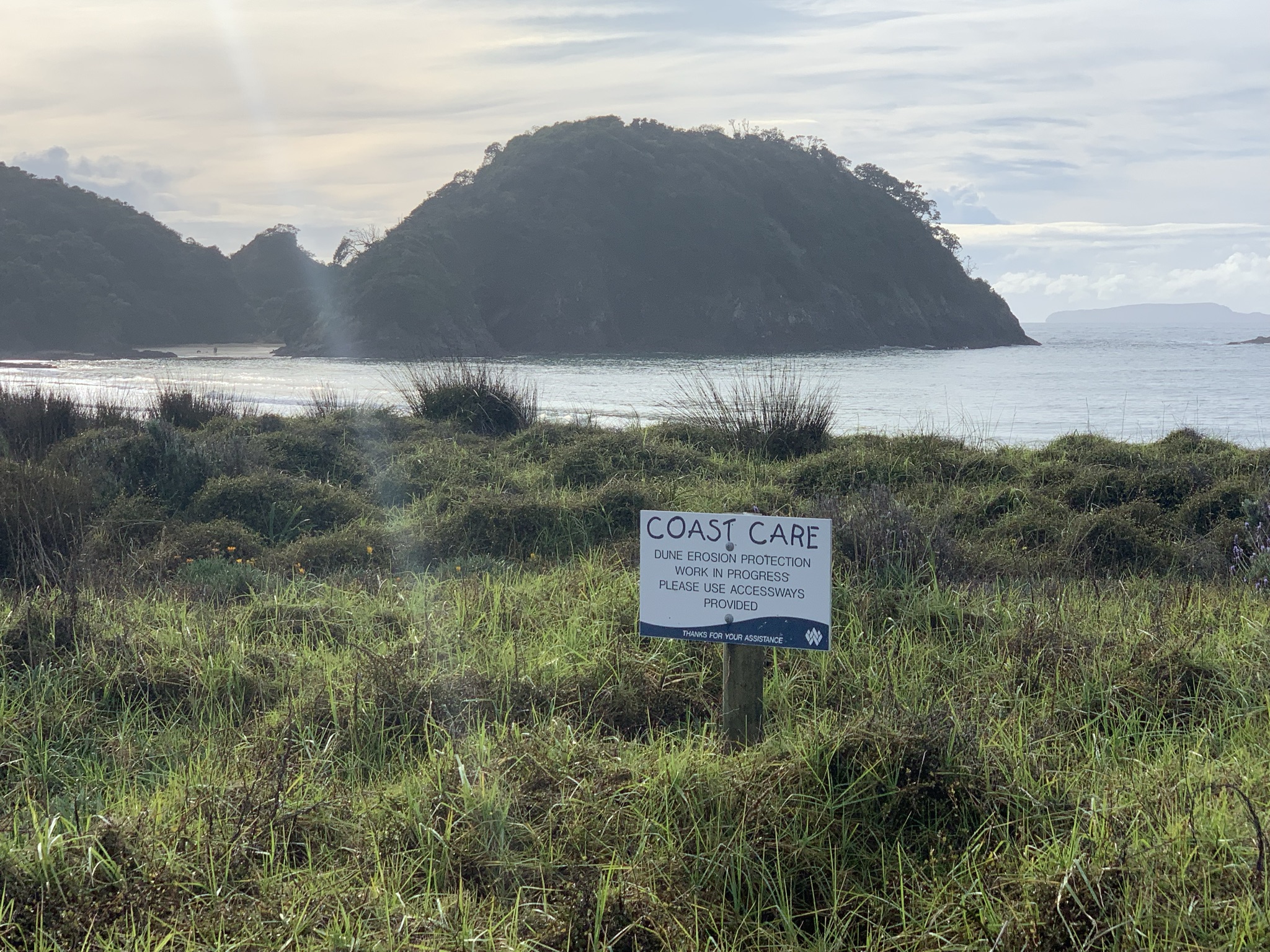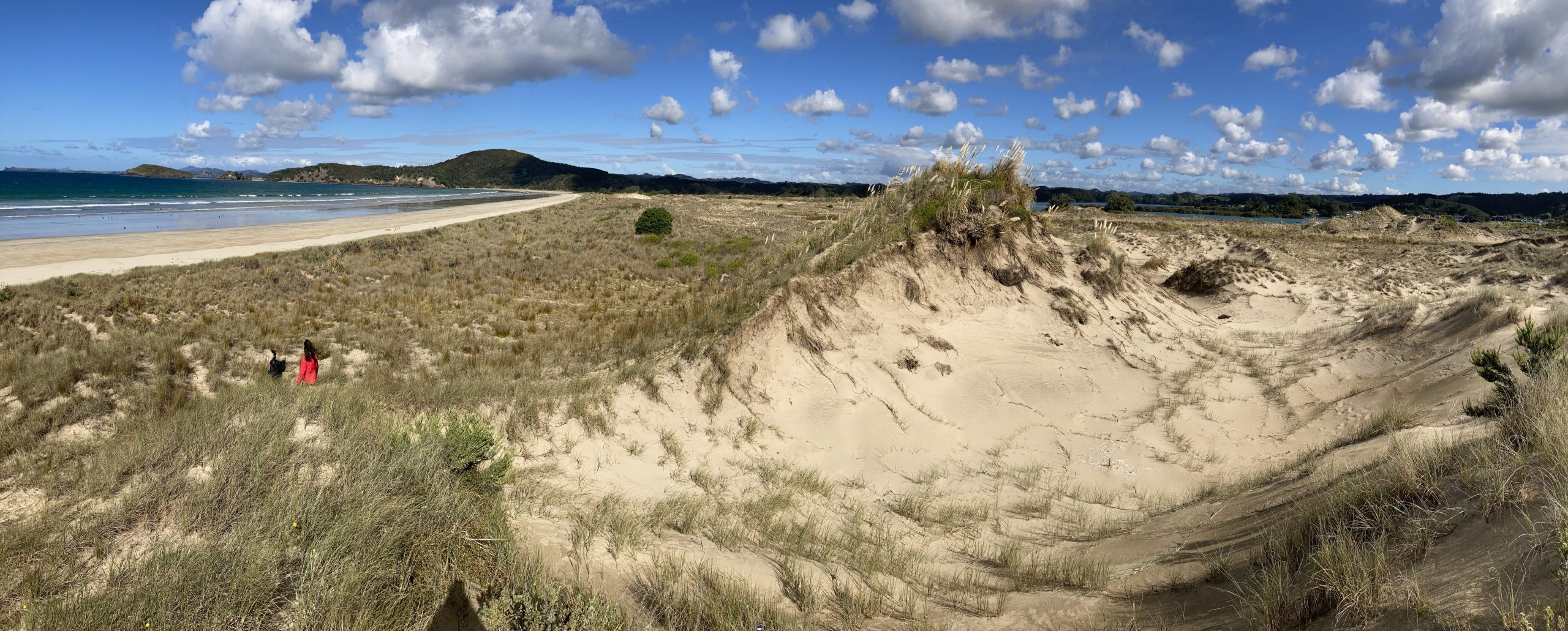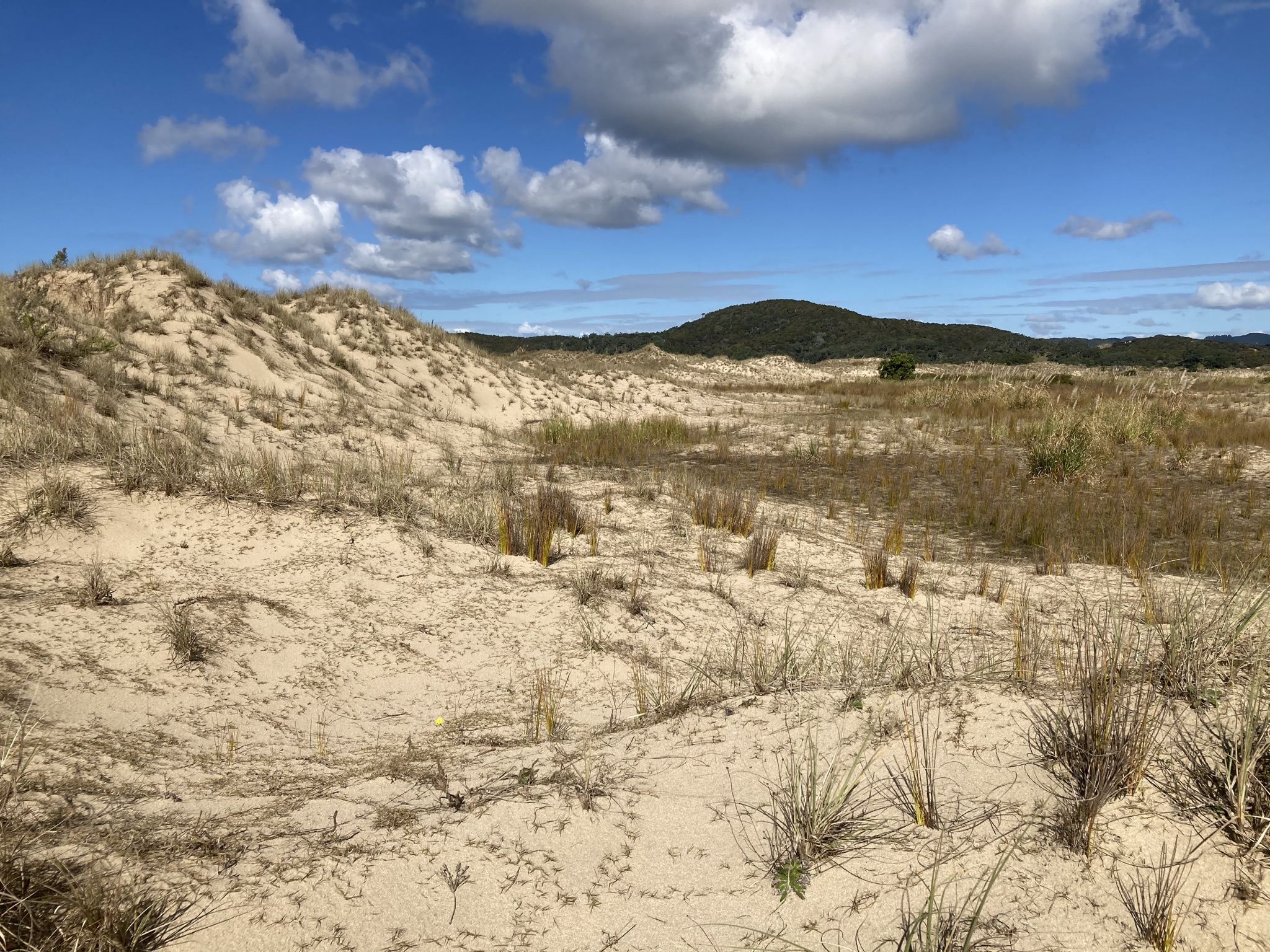Coastal Vegetation.
Plants that are adapted to mobile sand dune habitats are referred to as dune-building or sand trapping plants and can grow on foredunes (the most seaward ridges of sand). Two main indigenous sand trapping species occupy foredunes in New Zealand. Spinifex occurs on foredunes throughout most of the North Island and the upper part of the South Island, and Pīngao/Pīkao can grow throughout New Zealand. A third species, marram grass, was introduced from Europe to New Zealand in the late 1880s. This plant now occurs on foredunes throughout New Zealand, but particularly in the South Island.
Changes in dune vegetation can be an important driver of coastal change. The arrival of marram in southern New Zealand resulted in the stabilization of large sand sheets and active dunes. Where dunes might have had little vegetation, many are now fully vegetated. At some places, such as Mason Bay, Rakiura, marram replaced pīngao causing the coast to build seawards and a large stable foredune to form. Marram also forms foredunes which are higher and steeper than those formed by New Zealand’s native dune plants, and it is thought that marram foredunes may form larger scarps and recover more slowly than those formed by spinfex or pīngao.
Sand trapping vegetation can also help increase coastline resilience to erosion. Dune vegetation intercepts sand transported by wind which is then added to the dune system. Coastal vegetation also stabilizes the surface of coastal dunes against wind erosion. The buried parts of plants such as roots increase soil cohesion which can reduce the amount of erosion occurring during a storm, while leaves and stems help slow wave energy during overtopping events. Vegetation is also important for dune repair following an erosive storm. If sand returns to a beach following a storm, sand trapping vegetation can extend down the dune face helping to build and repair the dune.
Many coastal communities around New Zealand work together running replanting programs to protect their coastal dunes which act as natural coastal defences against wave overtopping and inundation during storm events. Where dunes have been lost, they can sometimes be rebuilt using sand fences, vegetation planting or building dunes with earth moving equipment.





